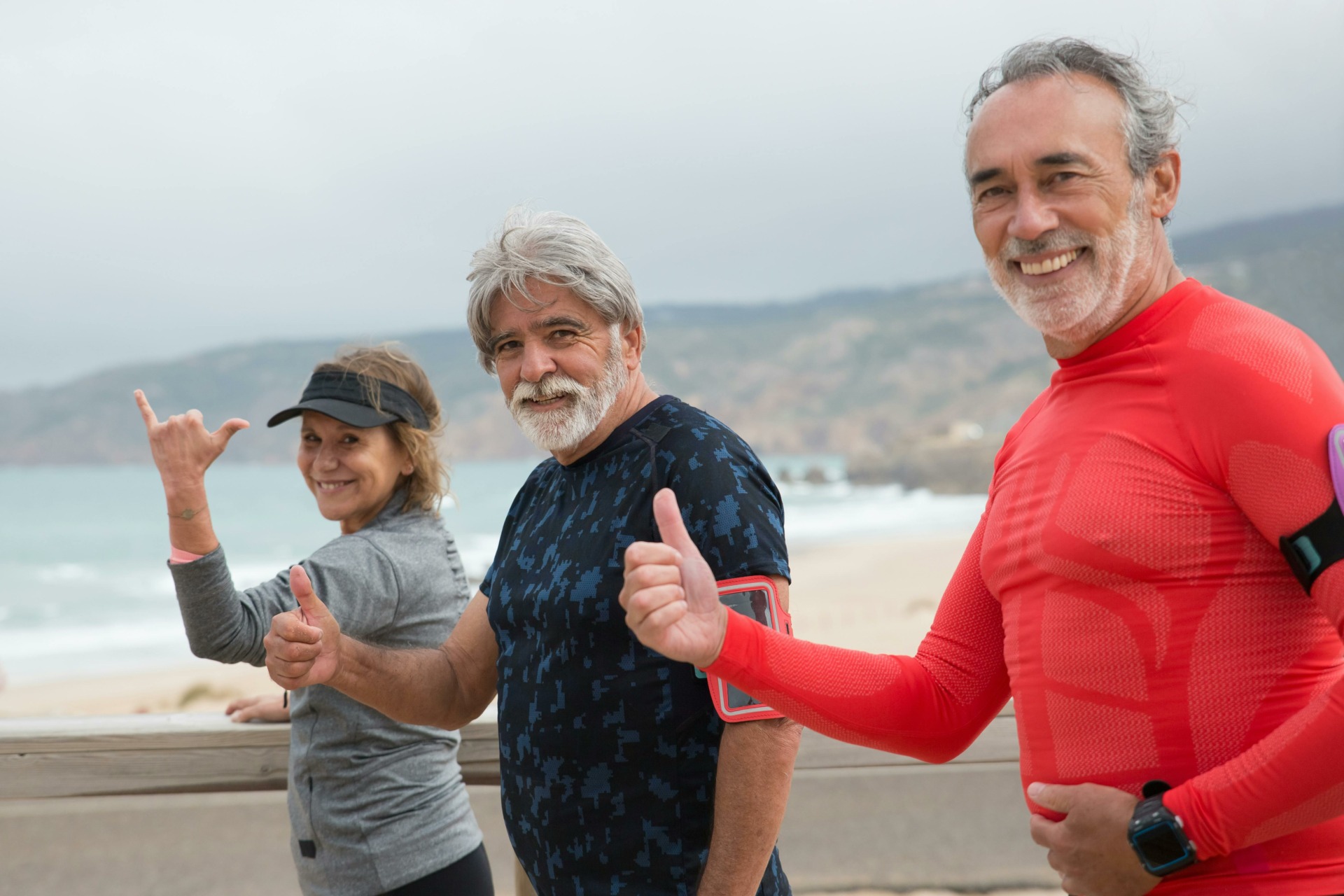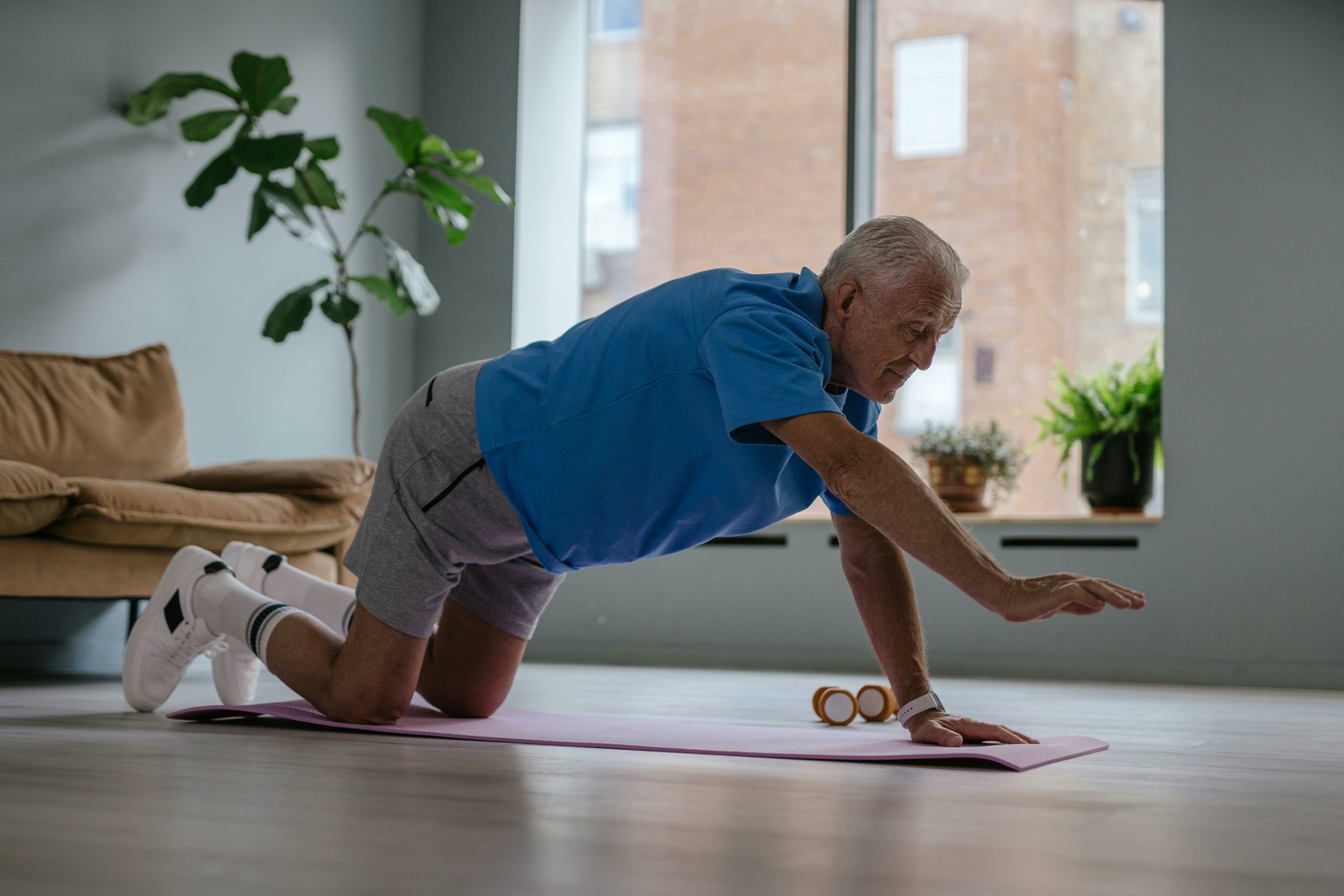Every year, millions of older adults experience falls, making it one of the leading causes of injury among people over 50. But here’s the good news—many falls are preventable, and one of the most effective ways to reduce your risk is by incorporating flexibility and balance exercises into your routine.
Falls don’t just result in bumps and bruises—they can lead to fractures, loss of independence, and even long-term health complications. But with a proactive approach focused on improving balance, enhancing flexibility, and strengthening stabilizing muscles, you can maintain your mobility, confidence, and quality of life.
Let’s dive into why balance and flexibility are so crucial as we age and the best exercises to help keep you steady, strong, and fall-free.
🧠 Why Balance and Flexibility Matter More As We Age
As we get older, natural changes in the body—like muscle loss, joint stiffness, and decreased coordination—can make it harder to stay steady on our feet. Even simple activities like reaching for an item on a high shelf or walking on uneven terrain can become riskier.
🚨 Common Age-Related Factors That Increase Fall Risk:
- Muscle Weakness: Muscle mass naturally declines with age (a process called sarcopenia), reducing strength and stability.
- Joint Stiffness: Less flexibility limits your range of motion, making it harder to recover from stumbles.
- Poor Balance: Inner ear changes, vision issues, and neurological factors can all affect your sense of balance.
- Medication Side Effects: Some medications can cause dizziness or affect coordination.
- Decreased Bone Density: Osteoporosis increases the risk of fractures if a fall occurs.
The good news? Regular balance and flexibility exercises can counteract these effects, helping you stay strong, stable, and confident.
💡 Benefits of Flexibility and Balance Exercises
- 💪 Reduced Fall Risk: Improved balance helps prevent slips, trips, and stumbles.
- 🦵 Enhanced Mobility: Flexible muscles and joints allow for smoother, more coordinated movements.
- 🧘 Better Posture: Balance exercises strengthen core muscles, improving posture and alignment.
- 💖 Increased Confidence: Feeling steady on your feet reduces fear of falling and encourages a more active lifestyle.
- ⚡ Improved Reaction Time: Strong balance skills help you recover quickly if you trip or lose footing.
🏋️ Top Flexibility and Balance Exercises for Fall Prevention
You don’t need a gym membership or fancy equipment to improve your balance and flexibility. These simple yet effective exercises can be done at home and are gentle on the joints.
🧍♂️ 1. Standing Leg Lifts (For Hip Strength and Balance)
How to do it:
- Stand tall with a chair or countertop nearby for support.
- Slowly lift one leg to the side, keeping your back straight and core engaged.
- Hold for 5–10 seconds, then lower your leg.
- Repeat 10–15 times on each side.
💡 Tip: As your balance improves, try doing it without holding onto the chair.
🦶 2. Heel-to-Toe Walk (For Coordination and Stability)
How to do it:
- Walk in a straight line, placing the heel of one foot directly in front of the toes of your other foot.
- Focus on a point straight ahead to maintain balance.
- Take 20 steps, turn around, and repeat.
💡 Tip: If you’re new to this, perform the exercise near a wall for support.
🦵 3. Calf and Hamstring Stretches (For Flexibility)
Calf Stretch:
- Stand facing a wall, place your hands on it, and step one foot back.
- Keep your back heel flat on the ground and bend your front knee.
- Hold for 20–30 seconds, then switch sides.
Hamstring Stretch:
- Sit on a chair, extend one leg straight with your heel on the floor.
- Gently lean forward from your hips until you feel a stretch along the back of your thigh.
- Hold for 20–30 seconds and repeat on the other leg.
🧘 4. Tai Chi (For Mind-Body Balance)
Tai Chi is a gentle form of exercise that focuses on slow, controlled movements and deep breathing. It’s been shown to significantly improve balance and reduce the risk of falls in older adults.
💡 Tip: Look for local Tai Chi classes or follow guided YouTube videos designed for seniors.
🤸 5. Seated Marching (For Core Strength and Coordination)
How to do it:
- Sit upright in a sturdy chair with your feet flat on the floor.
- Slowly lift one knee toward your chest, then lower it back down.
- Alternate legs in a marching motion for 1–2 minutes.
💡 Tip: This is a great option for those with mobility limitations or when you need a low-impact exercise.
🧍♀️ 6. Tree Pose (For Balance and Focus)
How to do it:
- Stand tall with feet hip-width apart.
- Shift your weight onto your left foot and place your right foot on the inside of your left calf or thigh (avoid the knee).
- Bring your hands together in front of your chest or raise them overhead.
- Hold for 15–30 seconds, then switch sides.
💡 Tip: If you’re new to this pose, keep one hand on a wall or chair for support.
🛡️ Tips for Staying Safe While Practicing Balance Exercises
- Use a stable surface (like a countertop or chair) for initial support.
- Wear non-slip shoes or go barefoot on a safe, clean surface.
- Start slow and increase repetitions or hold times as your strength and stability improve.
- Stay hydrated and avoid exercising when feeling lightheaded or fatigued.
📅 How Often Should You Practice Balance and Flexibility?
- Balance exercises: Aim for 3–5 times per week for at least 20–30 minutes.
- Flexibility exercises: Incorporate stretching daily or after workouts to maintain muscle elasticity and joint mobility.
Consistency is key. Even simple daily practices, like standing on one foot while brushing your teeth, can make a big difference over time.
🌟 Final Thoughts: Stronger Balance, Safer Future
Falls aren’t an inevitable part of aging. With the right balance and flexibility exercises, you can improve stability, reduce your risk of injury, and maintain your independence for years to come.
✨ Stay proactive, stay steady, and keep moving forward—because a strong, stable body is the foundation for a vibrant, active life.
Photo by SHVETS production: https://www.pexels.com/photo/an-elderly-man-exercising-on-a-yoga-mat-8899546/



Leave a Reply